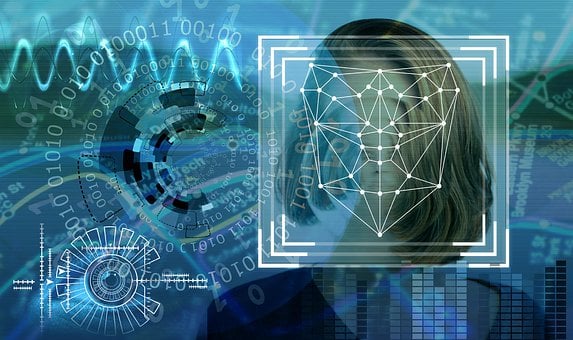Biometric attendance system impact & advancements
Biometric attendance is a revolutionary technology that has taken the corporate world by storm. This technology is being used by companies worldwide to monitor employee attendance and to streamline their payroll process. In this article, we will explore the concept of biometric attendance and its benefits, as well as its impact on the workplace.
Biometric technology has become increasingly popular in recent years due to its ability to provide secure and convenient identification and authentication solutions. Biometric authentication refers to the process of using a person’s unique physical or behavioral characteristics to verify their identity. This technology is used in a wide range of applications, from border control to access control, and has the potential to revolutionize the way we interact with technology. In this article, we will explore the advancements in biometric technology, its various applications, and the concerns surrounding its use.
Advancements in Biometric Technology
The advancements in biometric technology have been significant over the years, allowing for more accurate and efficient identification and authentication processes. One of the most significant advancements has been in the development of more sophisticated sensors, which can capture high-quality images of biometric features such as fingerprints, facial features, and iris patterns.
Another significant advancement in biometric technology is the development of artificial intelligence (AI) and machine learning algorithms. These algorithms enable biometric systems to learn and adapt to new patterns and improve their accuracy over time. This means that as more data is collected and analyzed, the accuracy of biometric systems will continue to improve.
Additionally, advancements in mobile technology have made biometric authentication more accessible to the general public. Many smartphones now come equipped with biometric sensors, such as fingerprint scanners and facial recognition technology, which can be used to unlock devices and authenticate users.
Biometric identification refers to identifying an individual based on his/her distinguishing physiological and/or behavioural characteristics. As these characteristics are distinctive to each and every person, biometric identification is more reliable and capable than the traditional token based and knowledge based technologies differentiating between an authorized and a fraudulent person. This paper discusses the mainstream biometric technologies and the advantages and disadvantages of biometric technologies, their security issues and finally their applications in day today life.
What is Biometric:
Biometrics are automated methods of recognizing an individual based on their physical or behavioral characteristics. Some common commercial examples are fingerprint, face, iris, hand geometry, voice and dynamic signature. These, as well as many others, are in various stages of development and/or deployment. The type of biometric that is best will vary significantly from one application to another. These methods of identification are preferred over traditional methods involving passwords and PIN numbers for various reasons: (i) the person to be identified is required to be physically present at the point-of-identification; (ii) identification based on biometric techniques obviates the need to remember a password or carry a token. Biometric recognition can be used in identification mode, where the biometric system identifies a person from the entire enrolled population by searching a database for a match.
What is Biometric Attendance?
Biometric attendance is a system that uses unique physical characteristics to identify an individual. It involves the use of biometric sensors to scan and recognize unique physical traits such as fingerprints, iris, and face recognition. This technology is highly accurate and secure, making it a popular choice for attendance management in the corporate world.
Benefits of Biometric Attendance
There are several benefits of using biometric attendance in the workplace, including:
Accuracy: Biometric attendance is highly accurate, as it relies on unique physical characteristics that cannot be duplicated or forged. This eliminates the risk of time theft and ensures that employees are paid for the exact number of hours worked.
Security: Biometric attendance is highly secure, as it requires physical presence and cannot be accessed remotely. This ensures that only authorized personnel have access to sensitive information, such as attendance records.
Efficiency: Biometric attendance is highly efficient, as it automates the attendance tracking process and eliminates the need for manual record keeping. This reduces the workload of HR personnel and streamlines the payroll process.
Transparency: Biometric attendance is highly transparent, as it provides accurate records of employee attendance that can be easily accessed by HR personnel. This promotes fairness and accountability in the workplace.
Impact of Biometric Attendance on the Workplace
The use of biometric attendance in the workplace has several implications for employees and employers alike. Some of the key impacts include:
Improved Productivity: Biometric attendance ensures that employees are present and on time, which can help to improve productivity levels. This technology also eliminates the need for manual record keeping, which can free up HR personnel to focus on other tasks.
Reduced Payroll Errors: Biometric attendance ensures that employees are paid for the exact number of hours worked, which can help to reduce payroll errors. This technology also eliminates the risk of time theft, which can result in significant cost savings for employers.
Increased Security: Biometric attendance is highly secure, which can help to prevent data breaches and other security threats. This technology also ensures that only authorized personnel have access to sensitive information, such as attendance records.
Improved Compliance: Biometric attendance can help to ensure that employers comply with labor laws and regulations, as it provides accurate records of employee attendance. This technology also eliminates the risk of fraudulent timekeeping practices, which can help to prevent legal disputes.
Challenges of Biometric Attendance
While biometric attendance has several benefits, there are also some challenges associated with its implementation. Some of the key challenges include:
1. Cost: Biometric attendance systems can be expensive to implement, especially for small businesses. This can make it difficult for some employers to justify the cost of this technology.
2. Privacy Concerns: Biometric attendance involves the collection and storage of sensitive personal information, such as fingerprints and facial recognition data. This can raise privacy concerns among employees, especially in countries with strict data protection laws.
3. Technical Issues: Biometric attendance systems can experience technical issues, such as system downtime and sensor malfunctions. This can result in inaccurate attendance records and other problems.
4. Highly Accurate,secure, and efficient: Biometric attendance is a revolutionary technology that has the potential to transform the way businesses manage their workforce. This technology is highly accurate, secure, and efficient, making it a popular choice for attendance management in the corporate world. While there are some challenges associated with its implementation, the benefits of biometric attendance far outweigh the drawbacks.
Advancements in Bio-metric Technology
The advancements in bio-metric technology have been significant over the years, allowing for more accurate and efficient identification and authentication processes apart from its biometric device. One of the most significant advancements has been in the development of more sophisticated sensors, which can capture high-quality images of biometric features such as fingerprints, facial features, and iris patterns.
Another significant advancement in biometric technology is the development of artificial intelligence (AI) and machine learning algorithms. These algorithms enable biometric systems to learn and adapt to new patterns and improve their accuracy over time. This means that as more data is collected and analyzed, the accuracy of biometric systems will continue to improve.
Additionally, advancements in mobile technology have made biometric authentication more accessible to the general public. Many smartphones now come equipped with biometric sensors, such as fingerprint scanners and facial recognition technology, which can be used to unlock devices and authenticate users.






